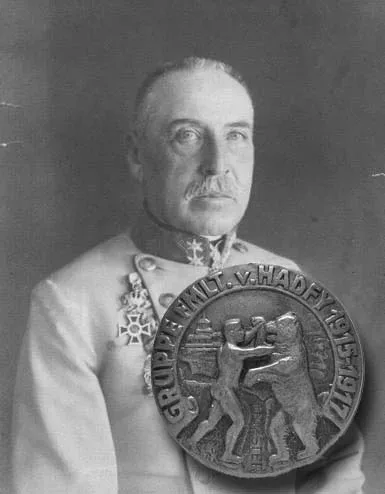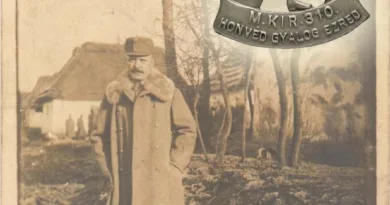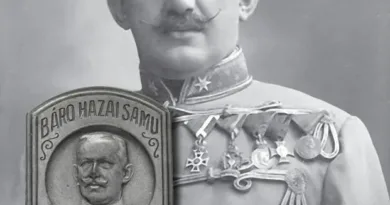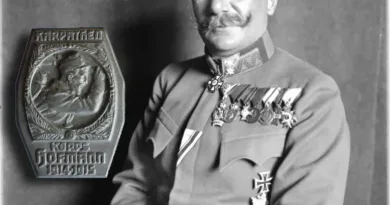Imre Hadfy von Livno, GdI
He was born in 1853 in Nagykároly. In 1875 he entered active military duty as a lieutenant. He took part in the occupation of Bosnia, where he distinguished himself by taking Sarajevo and Livno. In 1915 he received his noble first name Livno. After graduating from the military academy, he served alternately as a staff member and commanding officer. Between 1891 and 1897 he taught at the Honvéd Ludovika Academy in Budapest. In 1897 he was a major, in 1905 a colonel, then he became the commander of the 24th Infantry Regiment. From 1910, Major General, brigade commander. Before the Great War he worked in the military administration of the III. honvéd district.
His involvement in the war is linked to the command of two higher units. From August 1914 to September 1915 he was commander of the 39th Honvéd Infantry Division. This division played a key role in the Battle of Krakow that stopped the Russians in December 1914. Near Limanowa, this division consolidated the desperate resistance of the hussars disembarking from the horse. In May 1915, his division took a niche in the Gorlice breakthrough and pushed north under German subordination to Brest Litovsk. The persecution of the Russians lasted until September, when the lines stiffened.

He was subsequently appointed lieutenant general and corps commander of the newly established Henriquez Corps. From September 1915 till April 1917, he was commander of this corps that later took his name, Corps Hadfy and received later XXVI. numbering. This corps was stationed on the border of Bukovina and Galicia during this period and was involved in averting the two great Russian attacks in June 1916 and July 1917, and took part in the Allied counterattacks, the liberation of Bukovina. During the rest of the war he served as a corps commander from August 1917 as an infantry general in Transylvania and on the Italian front.
He retired in December 1918 at the end of the war. He lived in Hungary after the war and had no active military role any more. He died in Kiszombor in 1936, and his grave is also located there in the public cemetery of the municipality.

The insignia of the corps evokes the great fighting with the Russians. For almost two years, the corps faced General Ivanov’s Russian army along the Dniester. At the feet of the warrior wrestling with the Russian bear, this stream flows. The badge, decorated with a portrait of the general, is one piece of a series of portraits from the ARKANZAS company. Its shape is a bit unusual, not the most commonly used shield shape. Interestingly, the title of commander is “general” and not lieutenant general, as might have been called exactly on the basis of his rank.




